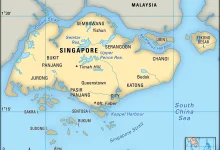The Smallest Arab Country by Population: An In-Depth Analysis of Comoros
When examining the Arab world, the diversity in geography, culture, and population is striking. Among the various nations that comprise this region, Comoros stands out as the smallest Arab country in terms of population. Nestled in the Indian Ocean, Comoros is not only unique in its demographic profile but also rich in cultural heritage and natural beauty. This article delves into the various facets of Comoros, exploring its demographics, historical context, economic landscape, and cultural identity.
Geographic Overview
The Comoros archipelago consists of three main islands: Grande Comore, Mohéli, and Anjouan, along with several smaller islets. These islands are situated between the eastern coast of Africa and Madagascar, providing a strategic location that has influenced trade and cultural exchanges over centuries. The total land area of Comoros is approximately 2,236 square kilometers, making it one of the smallest countries in the world by size, further amplifying its status as the least populous Arab nation.
Demographic Profile
As of recent estimates, Comoros has a population of around 806,000 people, a figure that has seen gradual growth over the years. This population density translates to approximately 360 inhabitants per square kilometer, reflecting the compactness of life on these islands. The demographic composition is predominantly Comorian, with significant cultural influences from Arab, African, and French ancestry, reflecting the islands’ historical ties to various civilizations.
Historical Context
Comoros has a rich history that has shaped its contemporary identity. The islands were first inhabited by Austronesian settlers and later became a melting pot of African, Arab, and European influences due to their strategic location along trade routes. The arrival of Arab traders introduced Islam, which remains the dominant religion today. By the late 19th century, Comoros became a French colony, a period that significantly impacted its political and economic landscape.
After gaining independence in 1975, Comoros has experienced a series of political upheavals, including coups and civil unrest. Despite these challenges, the nation has managed to maintain a distinct cultural identity, influenced by its diverse heritage.
Economic Landscape
The economy of Comoros is primarily based on agriculture, with the production of cash crops such as vanilla, ylang-ylang, and cloves being significant contributors to the GDP. Fishing also plays a crucial role, given the islands’ vast maritime resources. However, the economic situation is characterized by challenges, including limited infrastructure, high unemployment rates, and reliance on foreign aid.
Despite these issues, there is potential for growth, particularly in the tourism sector. Comoros boasts stunning natural landscapes, pristine beaches, and rich biodiversity, making it an attractive destination for ecotourism. The government has been working towards improving tourism infrastructure to enhance its economic viability.
Cultural Identity
Culturally, Comoros is a blend of various influences that have interwoven over centuries. The predominant language is Comorian, which has three main dialects corresponding to the three main islands, along with Arabic and French being widely spoken. The rich oral traditions, music, and dance of Comoros reflect its diverse heritage, celebrating both African and Arab influences.
Festivals and traditional ceremonies play a vital role in community life, with events such as the Eid al-Fitr and Eid al-Adha being celebrated with fervor. The islands’ unique architectural styles, evident in their mosques and traditional houses, further showcase the cultural amalgamation present in Comoros.
Challenges and Prospects
Despite its rich cultural heritage and natural beauty, Comoros faces several challenges that hinder its development. Political instability, economic dependency, and environmental vulnerabilities, particularly from climate change, pose significant risks. The government and local communities are increasingly recognizing the importance of sustainable practices, particularly in agriculture and tourism, to preserve their natural resources while fostering economic growth.
International cooperation and investment are critical to Comoros’ future development. Enhancing education, healthcare, and infrastructure will be essential for improving the quality of life for its citizens. Additionally, the promotion of Comoros as an ecotourism destination could provide much-needed revenue and create job opportunities, paving the way for a more stable economy.
Conclusion
In summary, Comoros, as the smallest Arab country by population, is a nation rich in history and culture yet faces significant socio-economic challenges. Its diverse demographic composition, influenced by various civilizations, has forged a unique cultural identity that is deeply intertwined with its geographical context. While the future holds both challenges and opportunities, a focus on sustainable development and international collaboration may help Comoros navigate its path toward prosperity. By embracing its rich heritage and potential for growth, Comoros can aspire to improve the living conditions of its people while preserving the natural beauty that makes it a gem in the Indian Ocean.
References
- United Nations Population Division. (2023). World Population Prospects.
- CIA World Factbook. (2023). Comoros.
- World Bank. (2023). Comoros Economic Update.
- UNESCO. (2023). Cultural Heritage of Comoros.

